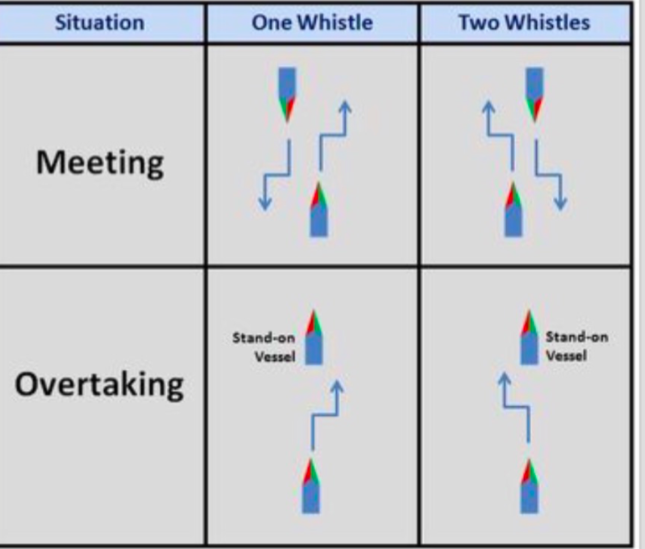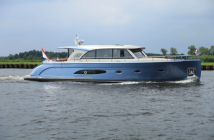We’ve all probably had the same experience, particularly on the inside passages of the ICW or the rivers of the Great Loop, when you’re about to pass another boat. You sound the proper whistle signal, indicating what you’re going to do – and nothing happens. Or you get a response that makes no sense whatsoever, such as four or seven blasts. There’s been some discussion about this, which could lead to confusion at best and a collision at worst, on the America’s Great Loop Cruisers’ Association blog lately. As a result, Dick Hermann, from Green Cove Springs, Florida, who cruises on Avocet, a Great Harbor 37, posted this easy guide (above) for the two most common whistles and responses. He suggests you print it out and tape it somewhere near your helm.
It’s actually easy to remember the whistle signals, if you think one blast means port and two blasts means starboard, per the guide below from the 67th edition of Chapman Piloting and Seamanship, which I helped edit (unabashed plug):
One short blast: I intend you leave you on my port side.
Two short, rapid blasts: I intend to leave you on my starboard side.
Three short, rapid blasts: I intend to operate astern.
Five short, rapid blasts: Danger, or I have doubt about the other vessel’s intentions.
The idea is that you respond in kind if you hear and agree with another vessel’s signal. In other words, if you’re approaching another vessel, and he signals one blast, it means he’s going to pass you on his port side. If you agree, you respond with one blast. If you disagree, or you think there’s some danger, respond with five blasts and then stop until the situation is resolved. Never respond to one blast with two blasts, or vice versa; that’s a crossed signal situation and can easily lead to trouble.




